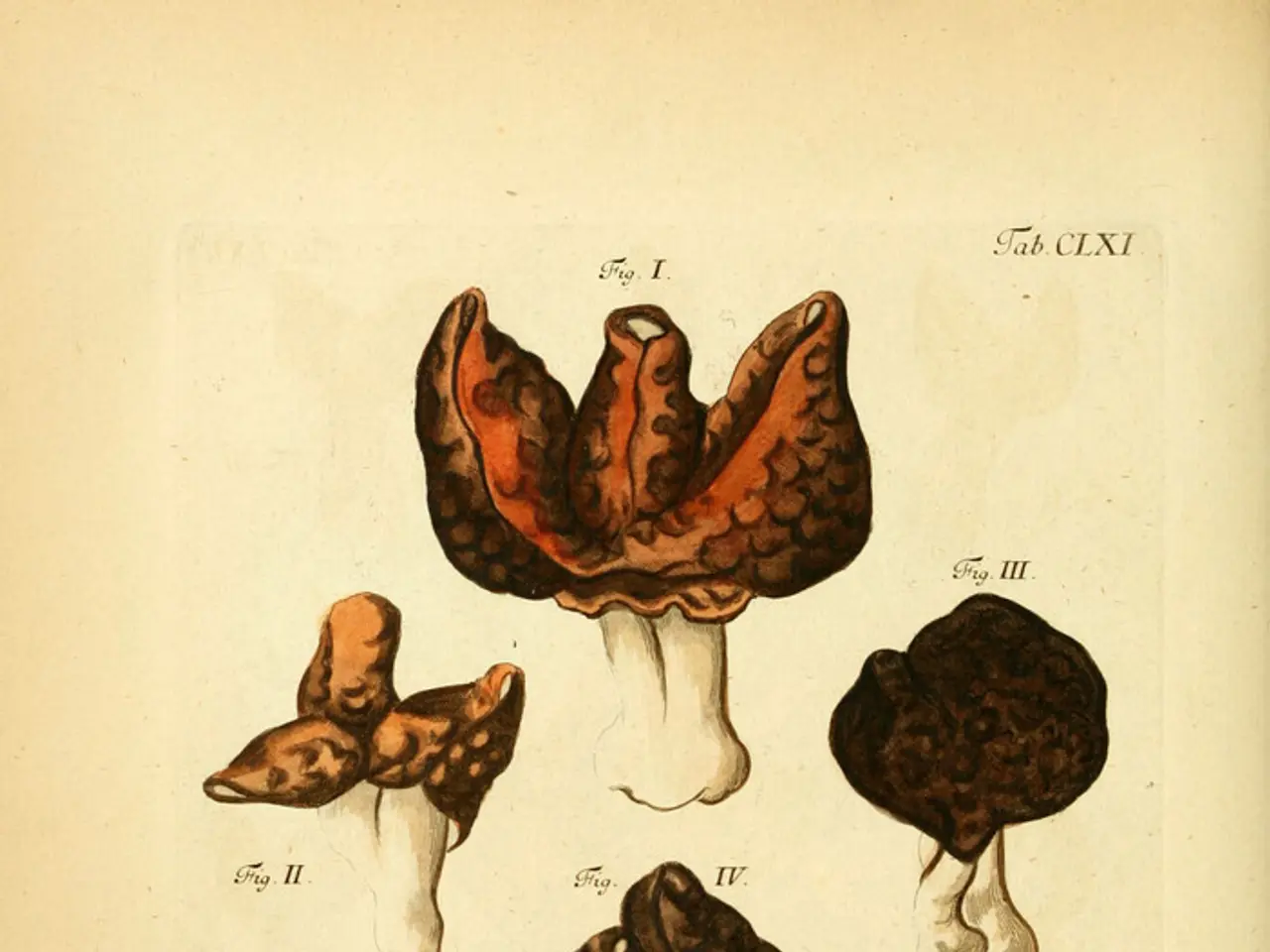Harmful Fungi in Baskets: Exploring the Toxicity of Certain Mushrooms
In the heart of Germany, the world of mushrooms is undergoing a significant transformation due to climate change. Poisonous champignons, once confined to specific regions, are increasing and even establishing themselves in the Mediterranean region. This shift has led to a concerning rise in the number of toxic mushroom species found in German forests and natural areas.
Amidst this changing landscape, the importance of responsible mushroom foraging cannot be overstated. For those venturing into the woods in search of edible delights, a few guidelines can ensure a safe and successful outing.
Firstly, it's crucial to remember the location and tree species at the find site, and a photo can be helpful for future reference. When presenting unknown mushrooms for consultation, it's essential to bring the entire mushroom, avoiding any cutting or cleaning with a knife. Transport these mysterious fungi separately to maintain their integrity.
Mushroom apps may seem like a convenient tool, but relying on them for identification can be life-threatening. Instead, consult scientific findings and the expertise of professionals. Crucial details, such as the color of the gills, can distinguish an edible mushroom from a poisonous one.
However, even the most experienced foragers must remain vigilant. New species that resemble known edible mushrooms but are poisonous may emerge. Do not assume that all is safe in the familiar.
Mushroom poisonings are a serious concern, with over half of the reported cases being "false mushroom poisonings," caused by old or improperly cooked mushrooms. Three children are currently in life-threatening danger due to the consumption of the Knollenblätterpilz, a reminder of the potential dangers that lurk in the forest.
For those seeking further knowledge, the Pilzschule Schwäbischer Wald offers seminars, day trips, and lectures on various topics, including mushrooms and edible wild herbs. More information can be found on their website at pilzschule-schwaebischer-wald.de.
The Bald Krempling, once considered edible in many Eastern European and Asian countries, is extremely toxic when raw. Repeated consumption, even when cooked, can lead to fatal allergies. The warning that the Bald Krempling is poisonous, even deadly, is often met with resistance from interested collectors. However, the increasing frequency of poisonous mushrooms in Germany due to climate change underscores the importance of heeding such warnings.
As the mushroom world continues to evolve, it's essential for foragers to approach their hobby with caution and respect. Remember, when in doubt, consult a professional. Your health and safety depend on it.
Mushroom consultations are offered at the Naturparkzentrum in Murrhardt from September to October by Beate Siegel and Manfred Klitzner. When attending, present only two to three different growth stages of unknown mushrooms for consultation. Do not use plastic or cloth bags for transportation of mushrooms.
In the end, the joy of foraging for edible mushrooms lies in the adventure, the connection with nature, and the delicious meals that can result. With the right knowledge and a healthy dose of caution, this pursuit can be a rewarding and safe experience.
Read also:
- Understanding Hemorrhagic Gastroenteritis: Key Facts
- Stopping Osteoporosis Treatment: Timeline Considerations
- Tobacco industry's suggested changes on a legislative modification are disregarded by health journalists
- Expanded Community Health Involvement by CK Birla Hospitals, Jaipur, Maintained Through Consistent Outreach Programs Across Rajasthan








